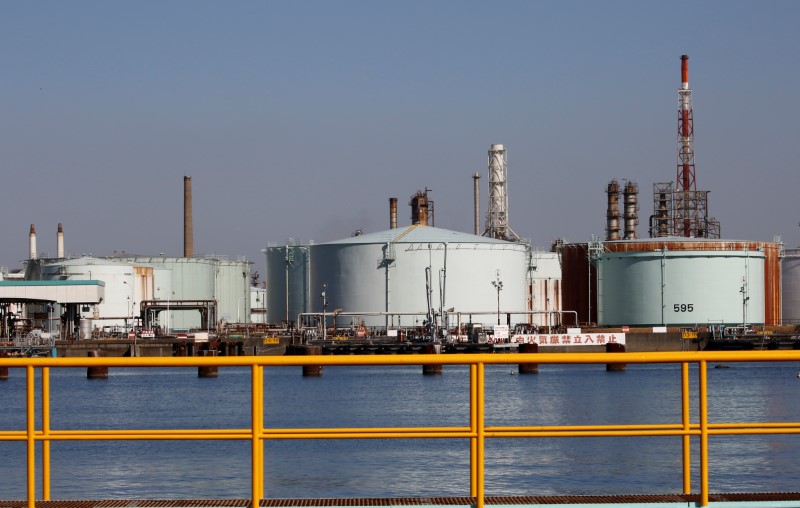* China July industrial output growth falls to 17-yr low
Euro zone
Q2 growth slows, Germany leads slowdown
* U.S. Treasury bond curve inverts for 1st time since 2007
* US crude stocks rise unexpectedly; record gasoline demand
-EIA
(Updates prices and market activity to settlement)
By Laila Kearney
NEW YORK, Aug 14 (Reuters) - Oil prices shed 3% on Wednesday
after fresh Chinese and European economic revived global demand
fears and U.S. crude inventories rose unexpectedly for the
second week in a row.
Brent crude LCOc1 settled at $59.48 a barrel, shedding
$1.82, or 3%, losing some of the previous session's sharp gains
after the United States moved to delay tariffs on some Chinese
products. The global benchmark rose 4.7% on Tuesday, its biggest daily
percentage gain since December.
U.S. West Texas Intermediate (WTI) crude futures CLc1
settled at $55.23 a barrel, falling $1.87, or 3.3%, after having
risen 4% the previous session, the most in just over a month.
China reported disappointing data for July, including a
surprise drop in industrial output growth to a more than 17-year
low, underlining widening economic cracks as the trade war with
the United States intensifies.
The global economic slowdown, amplified by tariff conflicts
and uncertainty over Brexit, is also hitting European economies.
A slump in exports sent Germany's economy into reverse in the
second quarter, data showed. The euro zone's GDP barely grew in the second quarter of
2019.
"The data out of China, the potential recession brewing in
Germany, all of that is playing into global demand worries,"
said Phil Flynn, an analyst at Price Futures Group in Chicago.
"Today, we're back in fear mode."
The U.S. Treasury bond yield curve inverted for the first
time since 2007, in a sign of investor concern that the world's
biggest economy could be heading for recession.
"With much focus today shifting toward the inversion in the
two versus 10-year bond yields, global risk appetite saw another
major contraction that easily flowed into the oil space," Jim
Ritterbusch, president of Ritterbusch and Associates, said.
A second week of unexpected builds in U.S. crude inventories
added to the pressure on the oil markets. EIA/S
U.S. crude stocks USOILC=ECI grew by 1.6 million barrels
last week, compared with analysts' expectations for a decrease
of 2.8 million barrels, as refineries cut output, the Energy
Information Administration said in its report. At 440.5 million
barrels, inventories were about 3% above the five-year average
for this time of year, the EIA said in its weekly report.
"Countering this bearish (crude) build has been draws to
both gasoline and distillates amid strong implied demand," said
Matt Smith, director of commodity research at ClipperData in
Louisville, Kentucky.
Gasoline stocks fell by 1.4 million barrels, compared with
analysts' expectations in a Reuters poll for an increase of
25,000 barrels, as demand jumped to a record 9.93 million
barrels per day, according to EIA data going back to 1991.
USOILG=ECI
<^^^^^^^^^^^^^^^^^^^^^^^^^^^^^^^^^^^^^^^^^^^^^^^^^^^^^^^^^^^
CHART-U.S. oil may test support at $55.73 L4N25A0XQ
CHART-Brent oil may retrace to $59.92 L4N25A0FJ
U.S. crude inventories, weekly changes since 2017 png https://tmsnrt.rs/2y7mC9g
Yield curve inversions, recessions & U.S. stocks https://tmsnrt.rs/2MZidOp
^^^^^^^^^^^^^^^^^^^^^^^^^^^^^^^^^^^^^^^^^^^^^^^^^^^^^^^^^^^>
